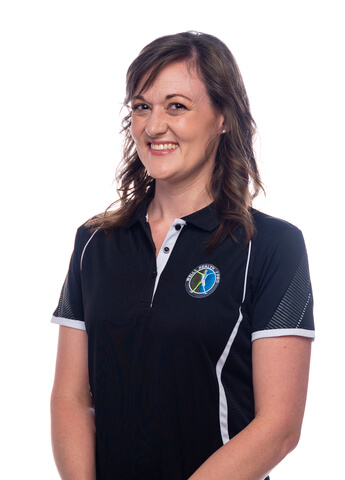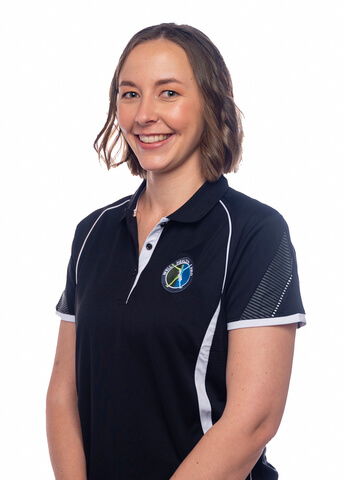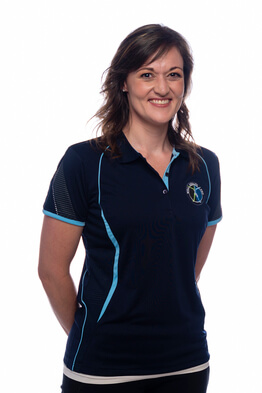Ultrasound therapy is one of the tools physiotherapists use in treatment and is the one machine that is in every practice. Ultrasonic sound waves stimulates the mitochondria to excite cellular metabolism that’s proven to accelerate tissue healing. The physiological benefits are never used in isolation, but in combination with other treatments to achieve the best results.
Therapeutic ultrasound is different from diagnostic ultrasound, that’s used in pregnancy to see a fetus. Diagnostic ultrasound is used to get an image of the underlying tissue, whether it’s an ultrasound during pregnancy, after an injury, or even just to clearly examine the extent of tissue damage. Therapeutic ultrasound, on the other hand, doesn’t give you an image on the screen. The ultrasound machine physiotherapists use is for therapy, physiological and chemical changes in a small area to help tissue recover.
What exactly is Ultrasound?
A sound wave is a type of energy that starts at a source and travels through a medium (air, liquid, or solid) until it reaches a receptor. In other words, when an object vibrates, it produces pressure waves that travel away from the source. Just like the ripples created when you throw a stone into a dam.
In general, the human ear detects frequencies between 16Hz to 20KHz (20 000 Hertz). Sound waves above this range, are called ultrasound. The ultrasound we use in practice is either 1 MHz or 3 MHz, these waves are 10 times faster than than a human ear can defect. That means the frequency is inaudible. The pace of the pulse high enough to cause cavitation at a microscopic level. These ripples and very fast vibration not only stimulates healing within a cell, but also promotes blood flow and, changes chemical reactions.
Electrical energy is used to produce rapid vibration in the ultrasound treatment head. A powerful crystal oscillates a metal plate causing it to vibrate at ultrasonic speeds. This vibration produces the ultrasound waves. Therefore, ultrasound isn’t the application of electrical energy, but rather mechanical energy.
Why we use Ultrasound therapy
When ultrasound (US) is used at high intensity and frequency, it produces heat in other words thermal effects. Like most heat treatments, this improves tissue elasticity and blood flow to the area. The increase in blood flow improves the delivery of oxygen and nutrients to the tissue, as well as removing waste products.
Non-thermal ultrasound therapy is used for its biochemical effects. These include changes in how effectively nutrients and chemicals are transported through the cell wall of the tissue. This influences metabolism and cellular activity, encouraging healing and pain relief.
In both cases, ultrasound therapy is a very gentle modality. If you are in severe pain and cringe at the thought of pressure on the injured site, ultrasound is a useful treatment tool to create an environment for healing.
Benefits of therapeutic ultrasound therapy treatment
- Accelerated healing
- Pain modulation (numbing effect)
- Relaxation of muscle spasms
- Regulating inflammation
- Improve blood supply
- Promotes nutrient delivery
- Stimulate bone healing
- Reduce swelling
“A gentle, soothing modality for pain relief.”
The Technique
Body tissues absorb or reflect sound waves, depending on the composition of the specific tissue. Any tissue or material, when exposed to a sound wave, vibrates about a fixed point as it cannot travel with the wave. When therapeutic ultrasound is applied, this vibration in the tissue’s molecular structure generates heat (almost like a friction reaction).
Ultrasonic waves are produced by a machine, and applied to your skin using a applicator. We use ultrasound gel to transfer the waves from the metal head through the gel, so that penetration of the sound waves can reach it’s target site. The settings are set by your practitioner depending on the goal they want to achieve at each session.
Different factors to consider during application
Thermal or nonthermal
Thermal application of ultrasound is a heat treatment and is most commonly used for subacute or chronic conditions. It is used after dry needling for post-treatment soreness, muscle spasm, or scar tissue. Nonthermal ultrasound is preferable for pain relief in cases of acute injuries or even severe nerve pain. More is not always better, especially with heat treatments, so your physiotherapist will choose the appropriate settings for your problem.
Continuous or pulsed ultrasound
When continuous ultrasound is applied, the machine transmits sound waves for 100% of the treatment time. This mode produces heat and, therefore, thermal effects of ultrasound. In contrast, pulsed ultrasound has variable off periods in each cycle. Depending on the specific machine, this can either be 10%, 20%, or 50% of the time. This setting is used when we want the non-thermal effects of ultrasound.
Depth of treatment
In most ultrasound machines, the frequency of ultrasound can be set to either 1 MHz or 3 MHz. The higher the frequency, the more superficial the treatment effects. Your therapist is an expert in the anatomy of muscles, nerves, and joints, so they will use their knowledge to determine the appropriate ultrasound frequency to target the right depth.
Intensity
The intensity, or energy, of an ultrasound treatment is measured in Watts per square centimeter (Watt/cm2 ). Your injury, phase of healing, and the area being treated determines the intensity required.
Thermal effects of ultrasound
Therapeutic ultrasound generates heat within the treated tissues. This localized heating increases tissue temperature, which has several therapeutic benefits (as discussed below). The extent of temperature increase depends on factors such as the ultrasound frequency, intensity, and duration of treatment.
Vasodilation
The increase in tissue temperature caused by therapeutic ultrasound leads to the dilation (widening) of blood vessels. This improves blood flow towards the treated area, which is brings needed nutrients to the injured tissue and down regulates pain stimulating chemical substances called cytokines which and helps reduce pain and inflammation.
Metabolic Effects
Elevated tissue temperature enhances metabolic processes within the cells. This can increase enzymatic activity and tissue metabolism, which contribute to tissue repair and regeneration.
Muscle Relaxation
The heat generated by therapeutic ultrasound can help relax muscles and reduce muscle spasms. This effect is often used in the treatment of conditions like muscle strains and trigger points. By downregulating the nerve responding to muscle guarding.
Increased Collagen Extensibility
Therapeutic ultrasound can increase the extensibility (stretchiness) of collagen-rich tissues, such as tendons and ligaments. This is helpful in conditions where improved flexibility and reduced stiffness are desired.
Pain Reduction
The combination of increased blood flow, muscle relaxation, and tissue healing all contribute to pain relief.
Nonthermal effects
Cavitation
Cavitation refers to the formation and behavior of tiny gas or vapor-filled bubbles (cavities) within tissues that are produced by ultrasound waves colliding. These bubbles expand and collapse rapidly, creating mechanical forces that have various effects, including:
Microstreaming
The rapid expansion and collapse of bubbles creates microstreaming, which is the movement of fluid near the bubbles. This microstreaming helps to enhance the transport of nutrients and remove waste products from cells, promoting tissue healing.
Altered Cellular Membrane Permeability
Cavitation-induced mechanical forces enhance the permeability of cellular membranes. This facilitates the uptake of therapeutic substances into cells, improving the effectiveness of drug delivery in certain situations.
Acoustic Streaming
Acoustic streaming is the steady flow of fluid induced by the passage of ultrasound waves through a liquid medium. This streaming influences the movement of cells and substances within tissues, facilitating tissue repair and promoting the removal of metabolic waste products.
Mechanical Effects
Therapeutic ultrasound produces mechanical vibrations in tissue, which we apply for therapeutic purposes. These mechanical effects include the relaxation of muscle fibers leading to improvements in muscle spasms, breaking down fibrous tissue, such as scar tissue or adhesions, stimulating microcirculation of blood in tissues, and potentially improving tissue oxygenation and nutrient delivery.
Biological Effects
Promotes the synthesis of specific proteins within cells, which play an important role in tissue repair and regeneration. Ultrasound also stimulates the movement of certain types of cells to the site of injury, having a knock on effect to accelerate healing.
Analgesic Effects
Non-thermal effects of ultrasound also contribute to pain relief by altering nerve function and desensitizing nerve endings that perceive pain.
Ultrasound therapy feels like:
Initially the ultrasound gel that’s applied is quite cold, then the applicator is moved in circular motion with some pressure on your skin. The ultrasound head may be warm, but this is only to limit discomfort from the cold gel on your skin. The actual therapeutic heating effects are in the deeper structures. Your therapist always uses a gel to ensure the conduction of sound waves from the ultrasound head to the tissue being treated. During treatment, the ultrasound head will be moving continuously as your physiotherapist covers the whole treatment area.
A sharp sting or dull cramp may develop during the course of the treatment. This indicates the sound waves concentrating on an area, and you should report it to your physio to make the appropriate adjustment.
How long does ultrasound treatment take?
The treatment time depends on wide variety of factors and can range from 2 to 10 mins. These factors that influence the correct treatment time, includes:
- Tissue type being treated
- Depth of treatment
- Stage of injury or stage of healing
- Thermal or non-thermal effects we want to achieve
- Size of the structure
Multiple application can be targeted at different depts, intensity or type of tissue the practitioner wants to treat. Remember, ultrasound treatment is only effective as part of a comprehensive treatment approach. Your physiotherapist is highly skilled to determine which modalities and techniques are appropriate for your unique situation.
How many times should I get ultrasound therapy?
You should be able to feel and see some changes after the first session, especially with severe swelling and acute injuries. However, the effects are short lived when used in isolation. In the acute stages, we might need to see you daily or on alternate days. As healing progresses and your condition improves, appointments are further apart to allow for tissue adaptation.
Your physiotherapist will discuss a treatment plan with you; giving you an idea of how long it will take for your condition to improve and how often you need to come in for treatment. This varies depending on your condition, severity, and stage of healing. Initially, treatments are closer together, 2 to 3 times a week, then once a week for the next week or two. Thereafter, the frequency of treatment depends on your condition’s response to treatment and how well you comply with your program.
What can I do at home to ensure ultrasound therapy is effective?
As the ultrasound treatment does not occur in isolation, it is important to adhere to all the advice your therapist gives you during and after the treatment. We strongly believe in empowering you with knowledge of your condition. However, we also give you the responsibility of being involved in the home advice and rehabilitation as prescribed. This is a team effort and we get the best results when you are actively involved in the process.
There are a few things you can do at home:
- Apply ice to help with swelling (your physio will advise you on how to do this and how long)
- Administer heat to an area if we have done a thermal treatment with heat packs
- Protect structures in acute cases (either with braces, strapping or simply rest from activity)
- Do your prescribed home exercises and stretches
Cost of ultrasound treatment
There is a specific medical aid rate for therapeutic ultrasound, which may differ between medical aids. But remember, ultrasound is only one part of a treatment session. Think of ultrasound as a single instrument in the orchestra of your treatment plan. Like a skilled conductor, your physiotherapist is an expert at choosing the other orchestra instruments that will amplify the healing, speed up recovery and give you the best results.
Medical Aid Code – 203
We use treatment code 203 is when ultrasound therapy is applied during a session. It can be used in conjunction with other techniques being applied and is rarely used in isolation. Most good medical aids offer re-imbursement for therapeutic ultrasound.
Does it make a difference to have an experienced physiotherapist apply ultrasound therapy?
To apply any modality correctly and effectively requires extensive knowledge of anatomy, and physiology, with an in-depth understanding of pathology and tissue healing. Our physiotherapists have years of clinical experience to choose the safest and most effective treatment options for your problem.
The skill of merely applying the ultrasound is redundant, but using it as a tool to compliment other treatments is precious. The broader scope and extent of your problem must be tackled with more finesse rather than just slapping on a temporary plaster.
An experienced therapist knows whether to use thermal or non-thermal effects of ultrasound, as well as the time, intensity, and frequency of the application. This leads to better treatment outcomes and avoids potential negative side effects. Although using ultrasound looks uncomplicated, it is essential that a qualified and experienced therapist use it in the correct clinical setup.





